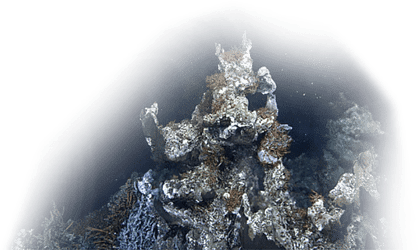The surface waters of the northeast Pacific are (November 2014) the warmest in several decades, and ONCs Folger Passage monitoring station has recently detected this anomaly (Fig. 1). The Gulf of Alaska anomalies started to show up during the winter of 2014 (Fig. 2), when weaker than normal storms and winds failed to completely erode the seasonal warm surface waters and bring cold nutrient rich water to the surface. The summer of 2014 added more heat to the surface ocean, and by September 2014, surface maps generated by NOAA (Fig. 3) revealed a large area with temperatures nearly three degrees warmer than usual.
Figure 1. Temperature record from Folger Passage for November 2014 (100m depth). The anticipated seasonal rise of temperatures in the fall is higher than usual, with peak temperatures reaching over 12°C, a full degree warmer than previously recorded.
Figure 2. Global Sea Surface Temperature (SST) anomaly (departure from the mean) for January 2014, showing a large region of warmer than usual temperatures in the northeast Pacific.
Figure 3. Daily snap-shot of the Sea Surface Temperature (SST) anomalies for the northeast Pacific for September 1, 2014 (NOAA NCDC).
The six year record from ONC’s Folger station (Fig. 4), monitoring the marine environment at 100m depth, reveals annual cycles driven by the prevailing winds. In the spring and summer, winds from the NW drive coastal upwelling which brings cool saline water near shore. During the fall, the prevailing winds are from the SW, and the ocean responds with down-welling along the coast of Vancouver Island, which brings off-shore surface waters towards the coast. This year (2014), with anomalously warm surface waters off-shore, the on-set of down-welling has brought on the warm surface waters that have been developing in the northeast Pacific onto the continental shelf, and in as far as Barkley Sound.
Figure 4. Six year record of ocean temperatures measured on Ocean Networks Canada's NEPTUNE observatory at the Folger Passage station (100m depth). Annual cycles reveal fall warming associated with down-welling and cooler spring-summer periods during the up-welling season. In November 2014, temperatures soared above 12°C, more than a full degree above any previous maximum from this site.
Although a weak El Nino has been in the offing for several months, these warm waters in the northeast Pacific are not directly associated with the El Nino Southern Oscillation (ENSO) phenomena. However, if an El Nino does develop in late 2014, the warm coastal waters are likely to persist well into 2015.
